3C5 Motion & Inertia
1/43
There's no tags or description
Looks like no tags are added yet.
Name | Mastery | Learn | Test | Matching | Spaced |
|---|
No study sessions yet.
44 Terms
Parallel axis theorem?

Perpendicular axis theorem?

Expression for total linear momentum of a body?

General expression for linear momentum of body?

Steps to derive moment of momentum about point P equation?

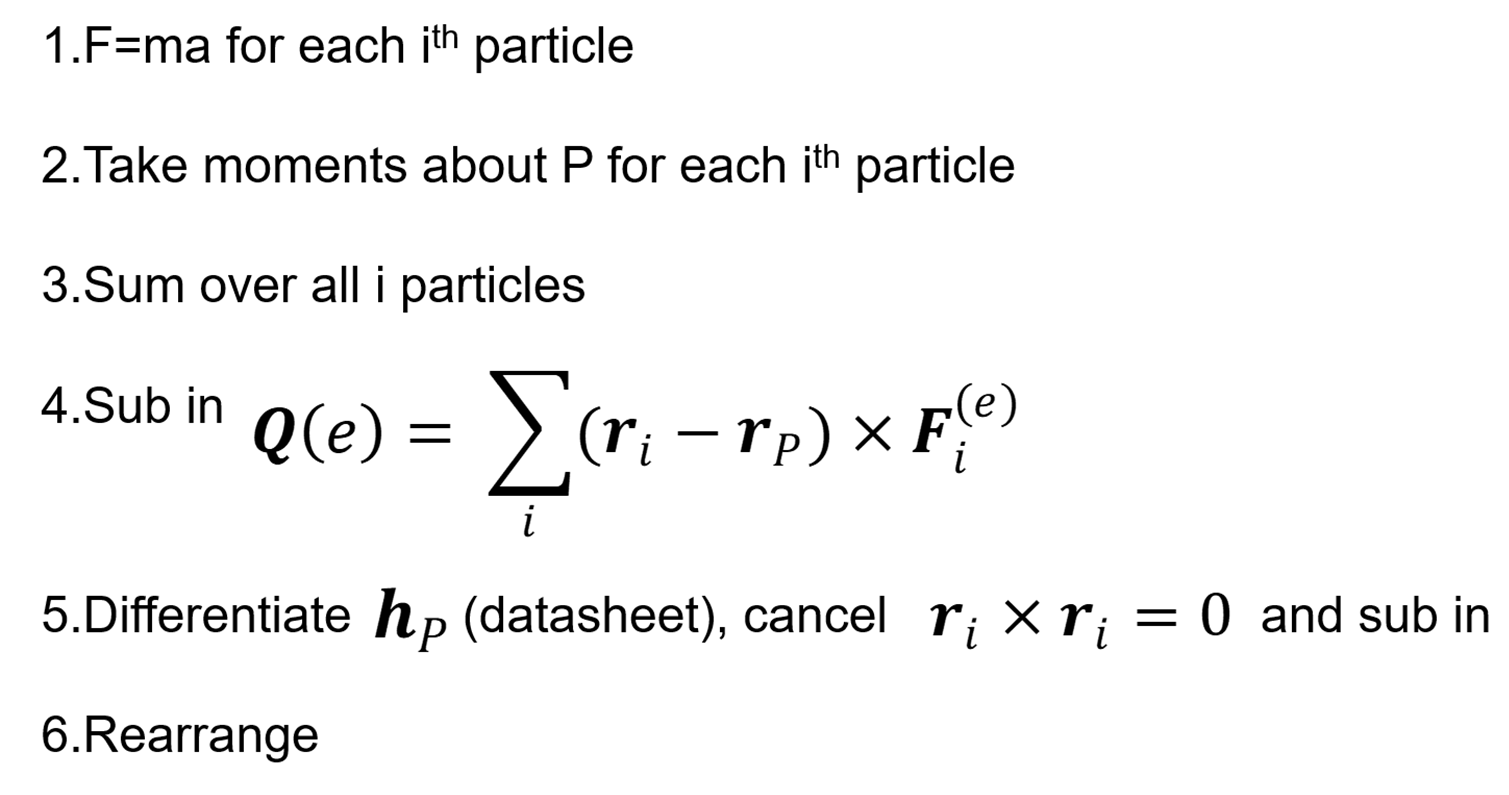
What can moment of momentum be thought of as? (/is the same as)
angular momentum
When does F=ma work in 3D for a rigid body?
only at G

Why does

?
Because

and

Properties of inertia matrix?
It is always symmetric
Any particular expression for IP is specific to the chosen point P and to the chosen set of axes
The diagonal elements are called “moments of inertia”
The off-diagonal elements are called “products of inertia”
Eigenvectors of real, symmetric matrix?
Mutually orthogonal
(can make natural basis for coordinate system—principal axes of inertia)
What do the eigenvalues of inertia matrix represent?
principal moments of inertia (A, B, C)
How is inertia matrix diagonalised?
rotate coordinates to the principal axes
THEN rest of terms are 0—don’t have to bother with products of inertia!
What can be said generally about a body with a mirror symmetry plane?
2 principal axes must lie in the plane
3rd normal to the plane
Inertia matrix of body with 3 equal principal moments?
And what does this mean for hG and the body’s axis of spin?
Multiple of unit matrix
hG parallel to ω
Body spins about fixed axis
Couple when rotating about principal axis?
Zero
For the simple harmonic-like equation for perturbation of a non-linear system, what does a negative/ positive sign in the place where squared frequency should be mean?
-ve = exponentially growing, original special solution is unstable
+ve = stable, can deduce frequency of small oscillations around the solution
Expressions for angular velocity of moving axis system in terms of Euler’s angles?
Ω1 = - ϕ̇ sinθ
Ω2 = θ˙
Ω3 = ϕ˙ cosθ
Assumption for precession?
“slow”
ϕ̇ < < ω3
K.E expression involving angular velocity?

Conditions for steady precession?
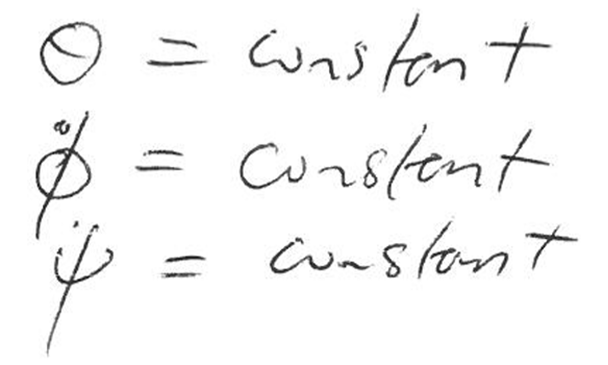
What is ‘spin’ referring to?
generally ψ˙
BUT ω3 on this course
Not an issue because ω3 = Ω3 + ψ˙
and for fast spin, ω3 >> Ω3, so ω3 ≈ Ω3
Which angle does precession pertain to?
And which one is spin?
Precession = ϕ̇
Spin = ψ˙
Why do ω1= Ω1 and ω2= Ω2 but not ω3?
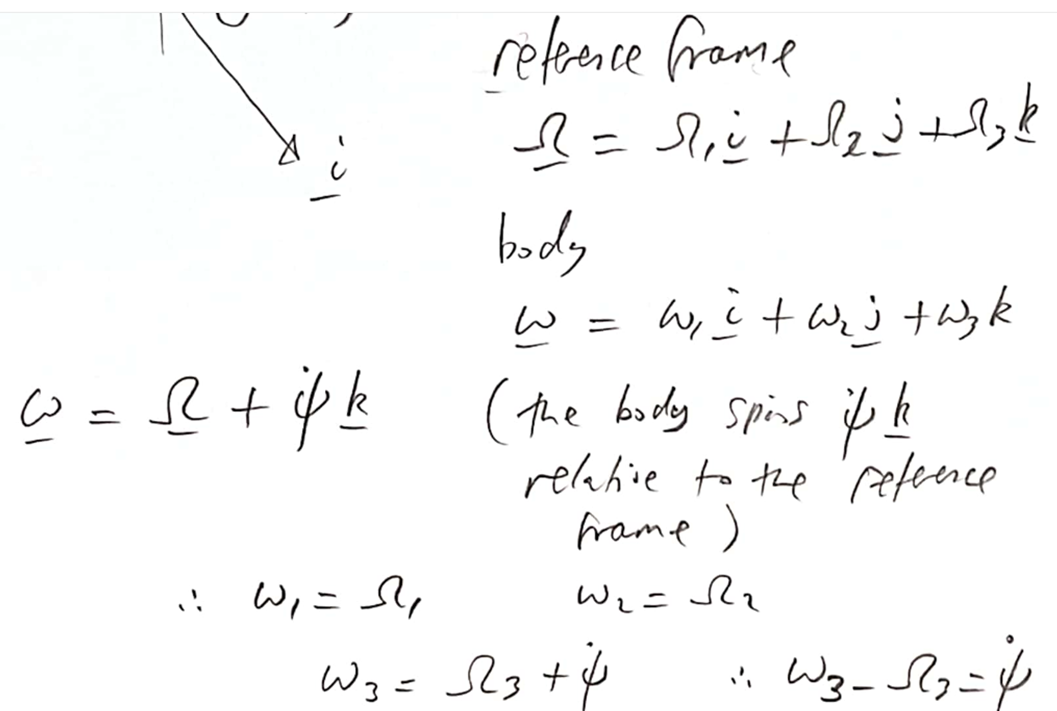
Gyro equation case for fast spin and steady precession?
Fast spin, slow precession:
ϕ̇2 very small, neglect
Gyro equation case for small perturbation?
Fast spin, fast precession
NUTATION
neglect mga term
and θ ≈ 0 so cosθ ≈ 1
Principal axes simplification for thin disc?
C = 2A
Frequency term in SHM differential equation?
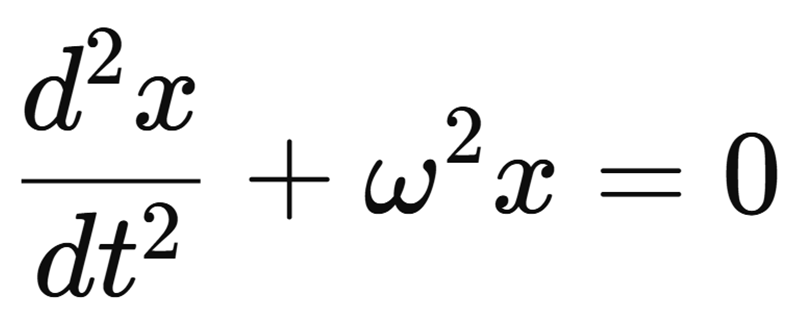
Moment of inertia of cube about axis through centre?
Ixx = Iyy = Izz = ma2 / 6
Moment of inertia of cube about axis through edge?
Ixx = Iyy = Izz = 2ma2 / 3
[double check this with Matt]
3D rotation matrices?
And how to find total rotation matrix?
R = Rx Ry Rz
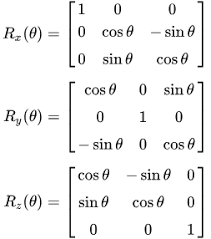
Find new matrix after rotation?
M2 = R M1 RT
What is a holonomic constraint?
And what should you do with non-holonomic system?
Can be used to reduce the number of degrees of freedom
Non-holonomic system: can’t use Lagrangian
^^have to use rolling bodies method
Derive Euler’s equations?
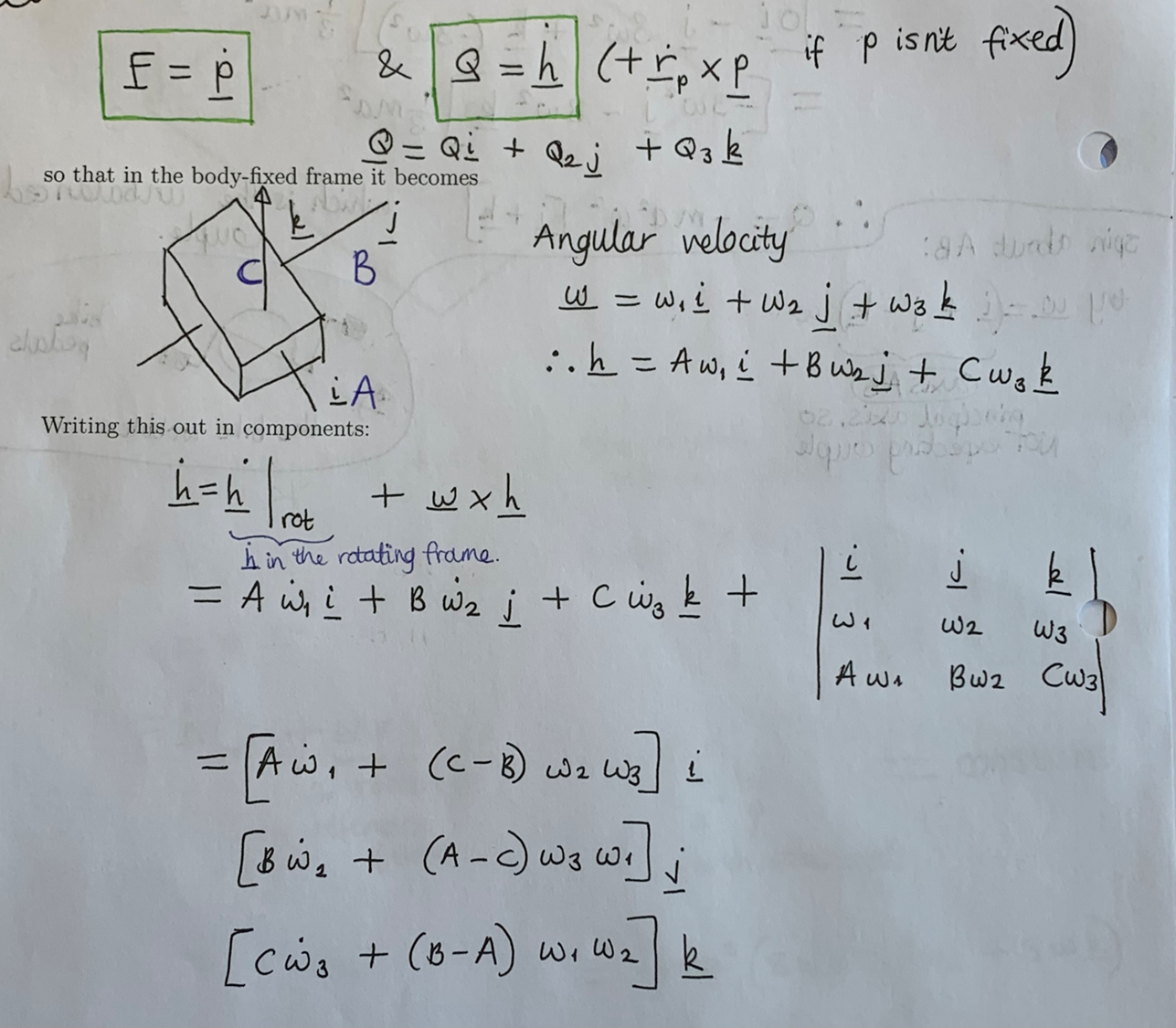
Derive Gyroscope equations?
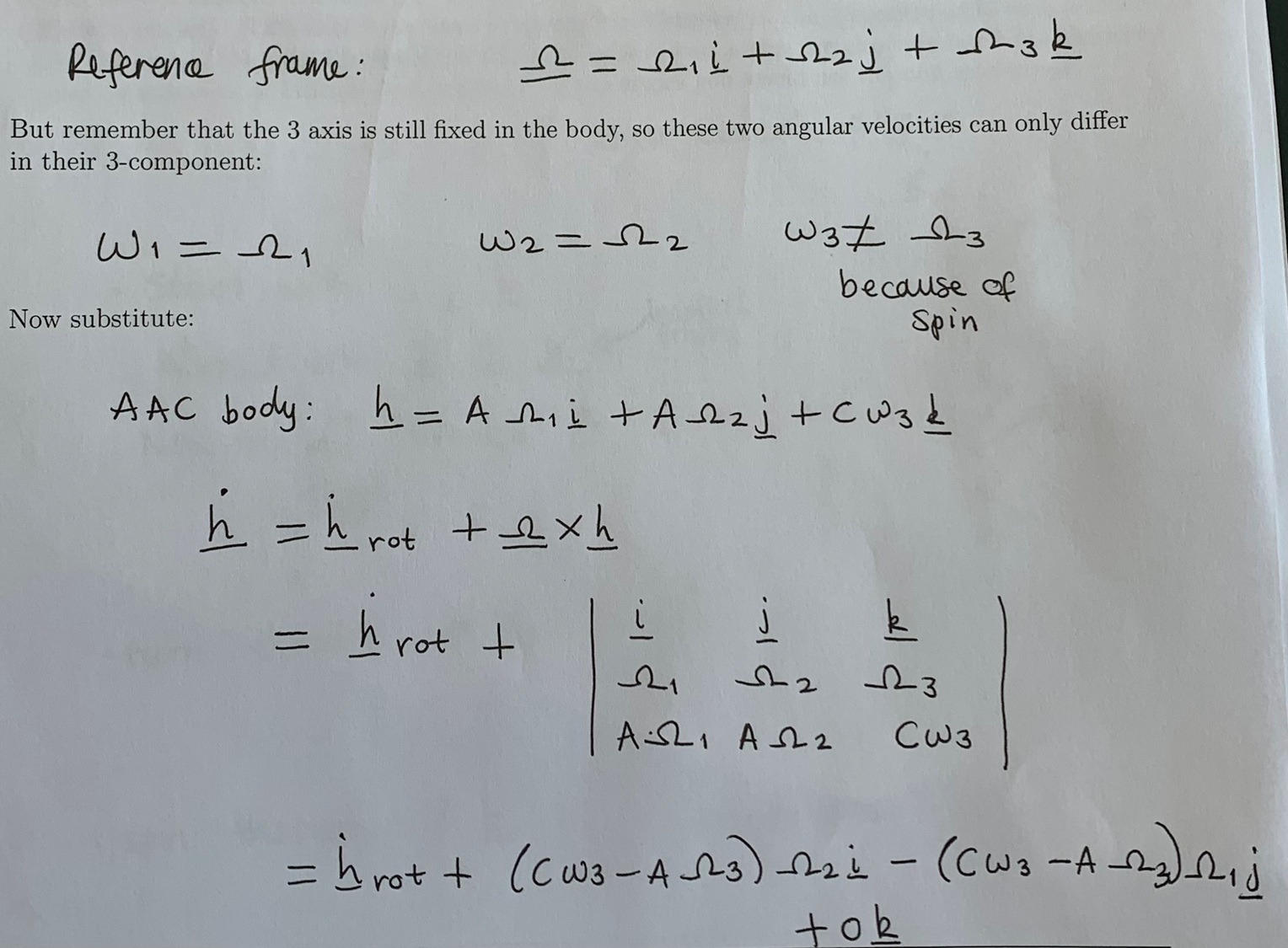
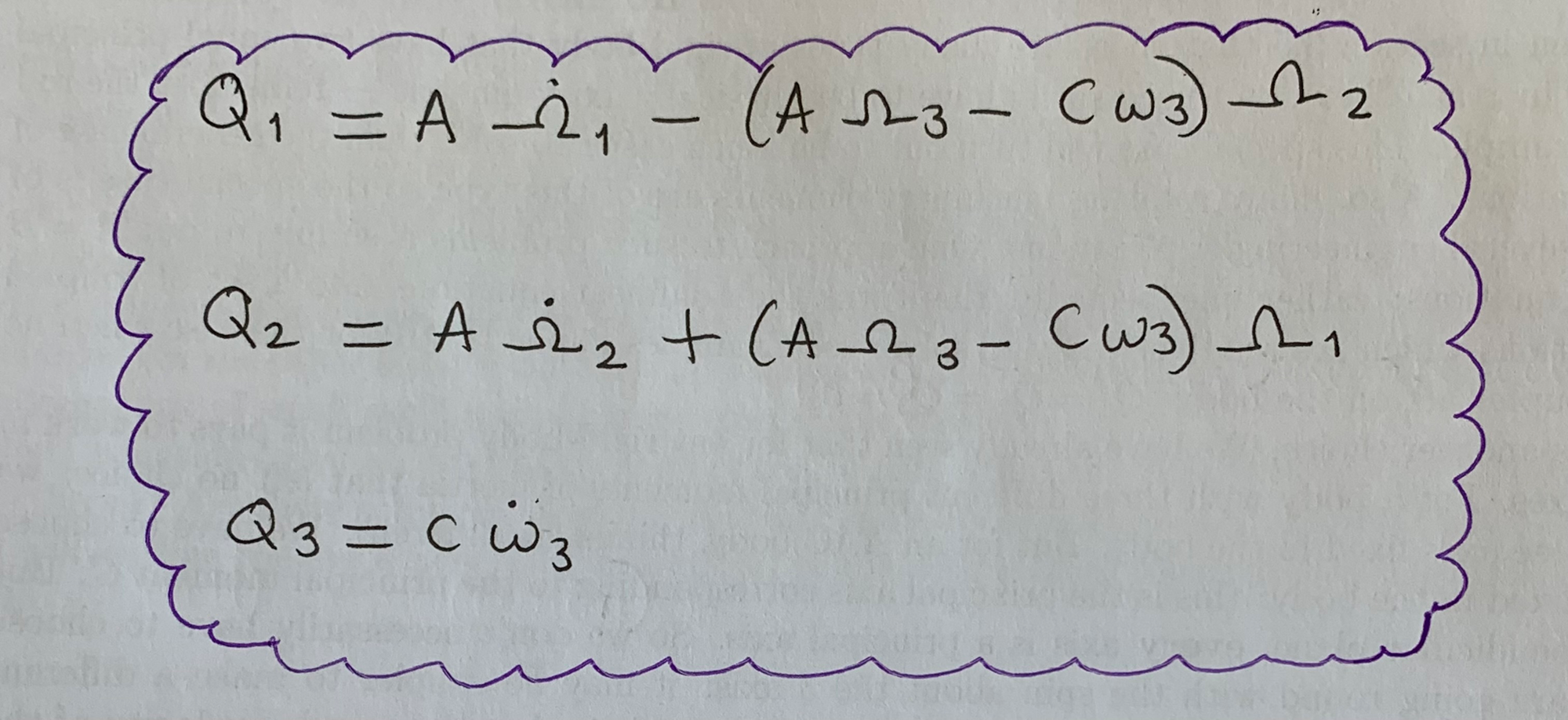
What can you say if impulse applied parallel to axis of rotation?
if applied parallel to k, ωk unchanged
Why does C=2A for thin disc?
perpendicular axis theorem
How to find direction that ω causes body to spin?
Right-hand grip rule
When is wobble rate twice as fast as spin of plate?
θ small